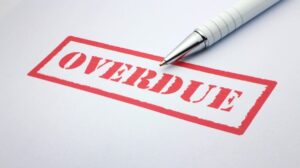As a business owner, one of the most frustrating challenges you can face is a customer who fails to pay on time or, even worse, doesn’t pay at all. This can significantly impact your cash flow, limit your ability to meet your own obligations, and, in extreme cases, jeopardise the survival of your business. If you find yourself in this situation, it’s important to know your options and the steps you can take to recover the debt.
- Communicate Clearly and Promptly
Before taking any formal steps, attempt to resolve the issue through direct communication. Often, late payments result from simple oversights, administrative errors, or temporary cash flow problems on the customer’s end. Send a polite but firm reminder, outlining the outstanding amount, the invoice number, and the due date. Follow up with a phone call to discuss the situation. This personal approach can often resolve the matter quickly without the need for further action.
- Send a Formal Letter Before Action
If initial communication fails, the next step is to send a formal Letter Before Action (LBA). This letter should outline the amount due, any interest or late fees applicable, and a clear deadline for payment (typically 7–14 days). State that if payment is not received by this deadline, you will pursue further legal action. An LBA shows that you are serious about recovering the debt and can often prompt a swift response from the customer.
- Use a Debt Collection Agency
If direct communication fails, engaging a debt collection agency might be your next step. These agencies specialise in recovering debts and can use various methods to encourage payment and save you a lot of time and distress. However, be aware that they will charge a fee or take a percentage of the recovered amount. It’s important to choose a reputable agency that complies with relevant regulations, such as the Financial Conduct Authority (FCA) rules.
- Issue a Statutory Demand
A statutory demand is a formal request for payment that gives the customer 21 days to settle the debt. If they do not comply, you may then be able to apply to the court to wind up the company (if the debtor is a business) or petition for bankruptcy (if the debtor is an individual). This option should be considered carefully, as it can be a costly and time-consuming process, but it can also be highly effective in compelling payment from customers who wish to avoid insolvency proceedings.
- Pursue Legal Action
If all other methods fail, pursuing legal action may be necessary. For debts under £10,000 in England and Wales, you can use the small claims court. For larger debts, or if the case is complex, you may need to consider the county court or High Court. Taking legal action should be a last resort due to the time and costs involved, but it can be effective for recovering significant sums.
- Explore Insolvency Proceedings
If your customer is a company that is unable or unwilling to pay its debts, you may consider initiating insolvency proceedings, such as winding up the company through a court order. This should be viewed as a last resort, as it can be a lengthy and expensive process which leads to no return. However, if the company is “good for the money” they are likely to pay up to avoid insolvency.
Dealing with unpaid invoices can be challenging, good administration processes that chase the debt can really help. Start by communicating clearly, then escalate to formal letters and consider debt collection agencies if needed. In more serious cases, legal action or insolvency proceedings might be necessary. Always seek professional advice tailored to your specific situation to ensure you choose the most appropriate course of action.






